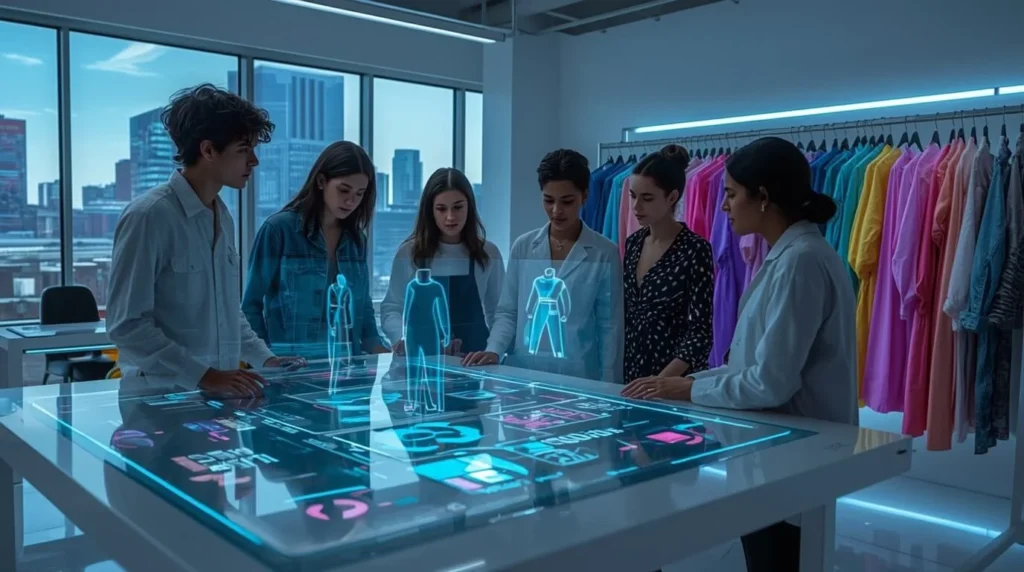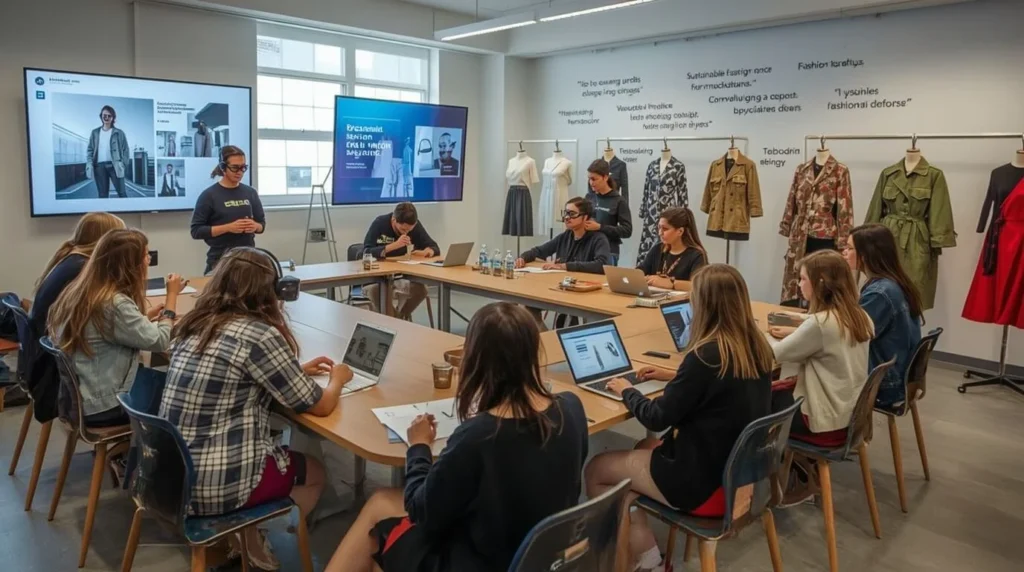Introduction: Why Fashion Education Must Evolve Now
Imagine stepping into a world where your clothes are designed by algorithms, crafted from sustainable materials, and sold through hyper-personalized online platforms. This isn’t a futuristic fantasy—it’s the reality of the fashion industry in 2025. As technology and consumer expectations shift at lightning speed, fashion education is undergoing a radical transformation to prepare students for a dynamic, innovative, and ethically driven industry.
For aspiring designers, stylists, and industry professionals, staying ahead means mastering emerging trends like artificial intelligence, sustainable practices, and ethical production. This article dives into the five critical areas reshaping fashion education, offering actionable insights and real-world examples to help students thrive in this ever-evolving field. Whether you’re a budding creator or an industry enthusiast, here’s what you need to know to succeed in 2025 and beyond.
Harnessing AI for Personalized Fashion Design

Why AI Is the Future of Creativity
Artificial intelligence (AI) is transforming the fashion industry, moving far beyond a passing buzzword. From designing unique garments to curating personalized shopping experiences, AI is revolutionizing how the industry connects with consumers. For students, understanding AI’s role in fashion is non-negotiable.
Take Stitch Fix, for example. This online styling service uses AI algorithms to analyze customer preferences, offering tailored clothing recommendations that feel bespoke. In 2024, their AI-driven approach boosted customer retention by 20%, proving the power of personalization. Fashion students must learn to leverage similar tools to create distinctive designs that resonate with individual tastes.
Key AI Skills for Students
To thrive, students should focus on:
- Data Analysis: Gain knowledge about how to analyze customer data to guide design decisions.
- AI Design Tools: Experiment with platforms like Adobe Sensei or Runway ML to generate innovative patterns and textures.
- E-Commerce Integration: Master AI-driven platforms like Shopify’s AI recommendations to enhance online shopping interfaces.
By embracing AI, students can craft hyper-personalized products that stand out in a crowded market. For instance, brands like Uniqlo are already using AI to predict trends and streamline inventory, a skill future designers must adopt to stay competitive.
Building Hands-On Skills Through Industry Collaboration

The Shift to Practical Learning
Gone are the days of purely theoretical fashion education. Today’s programs emphasize hands-on learning to bridge the gap between classroom and industry. From workshops to mentorships, students are gaining real-world experience that prepares them for the fast-paced fashion world.
Consider Parsons School of Design, which partners with brands like LVMH for mentorship programs. Students collaborate with industry experts, gaining insights into design, production, and marketing. In 2024, 85% of Parsons graduates reported feeling “industry-ready” due to such initiatives.
Essential Skill-Building Opportunities
To excel, students should seek:
- Workshops and Seminars: Hands-on sessions with designers or fabric developers teach practical skills like draping or digital pattern-making.
- Fashion Shows: Participating in or organizing runway events hones creative and logistical skills.
- Internships: Working with brands like Reformation or Everlane offers exposure to real-world challenges.
These experiences not only build technical expertise but also foster confidence and adaptability—qualities every fashion professional needs in 2025.
Prioritizing Ethical Fashion Practices

Why Ethics Matter More Than Ever
The fast fashion industry has faced intense scrutiny for unethical practices, from exploitative labor to environmental harm. Consumers are demanding change, with 66% of Gen Z shoppers prioritizing ethical brands, according to a 2024 McKinsey report. For students, understanding ethical fashion is critical to building a career that aligns with modern values.
Brands like Patagonia set the standard by using fair-trade certified factories and transparent supply chains. Aspiring designers must learn to navigate these principles to create meaningful, responsible work.
How Students Can Embrace Ethical Fashion
To integrate ethics into their practice, students should:
- Study Supply Chains: Understand sourcing and production to ensure fair labor practices.
- Collaborate with Ethical Brands: Partner with organizations like Fair Trade USA to learn best practices.
- Promote Transparency: Develop skills in communicating a brand’s ethical commitments to consumers.
By prioritizing ethics, students can position themselves as leaders in a movement toward a more responsible fashion industry.
Embracing Sustainability in Design

The Urgency of Sustainable Fashion
Sustainability isn’t just a trend—it’s a necessity. The UN Environment Programme estimates that 10% of carbon emissions worldwide are caused by the fashion industry. As consumer awareness grows, brands are under pressure to adopt eco-friendly practices, and education is following suit.
Take Stella McCartney, a pioneer in sustainable luxury. Her use of biodegradable materials and closed-loop systems has inspired a new generation of designers. Fashion schools must train students to create durable, multi-use pieces that reduce waste and environmental impact.
Key Sustainability Skills for Students
To lead in sustainable fashion, students should:
- Master Sustainable Materials: Experiment with fabrics like organic cotton, recycled polyester, or Tencel.
- Design for Longevity: Create versatile pieces that withstand trends and wear.
- Adopt Circular Systems: Learn about closed-loop production, where garments are recycled or repurposed.
By focusing on sustainability, students can craft designs that resonate with eco-conscious consumers while contributing to a healthier planet.
Redesigning Fashion Curriculums for the Future

Why Curriculums Need a Makeover
Traditional fashion education often lags behind industry demands. To prepare students for 2025, curriculums must evolve to include cutting-edge technologies, ethical practices, and real-world exposure. Blended learning—combining online resources, hands-on projects, and industry partnerships—is the way forward.
For example, London College of Fashion introduced a 2024 curriculum update that integrates virtual reality design labs and sustainability-focused modules. Graduates reported a 30% increase in job placement rates due to this forward-thinking approach.
Key Curriculum Updates for 2025
Modern fashion programs should include:
- Blended Learning: Combine online courses with in-person workshops for flexibility.
- Industry Exposure: Incorporate field visits to factories or design studios.
- Innovative Assessments: Move beyond traditional exams to project-based evaluations, like designing a sustainable collection.
By embracing these changes, schools can ensure students are equipped to navigate the complexities of the modern fashion landscape.
Conclusion: Preparing for a Bold Fashion Future
The fashion industry is at a crossroads, driven by technology, ethics, and sustainability. For students, mastering AI, hands-on skills, ethical practices, sustainable design, and modern curriculums is essential to thrive in 2025 and beyond. By embracing these trends, aspiring designers can create innovative, responsible, and impactful work that shapes the future of fashion.
Ready to take the first step? Explore fashion programs that prioritize these trends, connect with industry mentors, and start experimenting with sustainable materials today. The future of fashion is yours to design.


